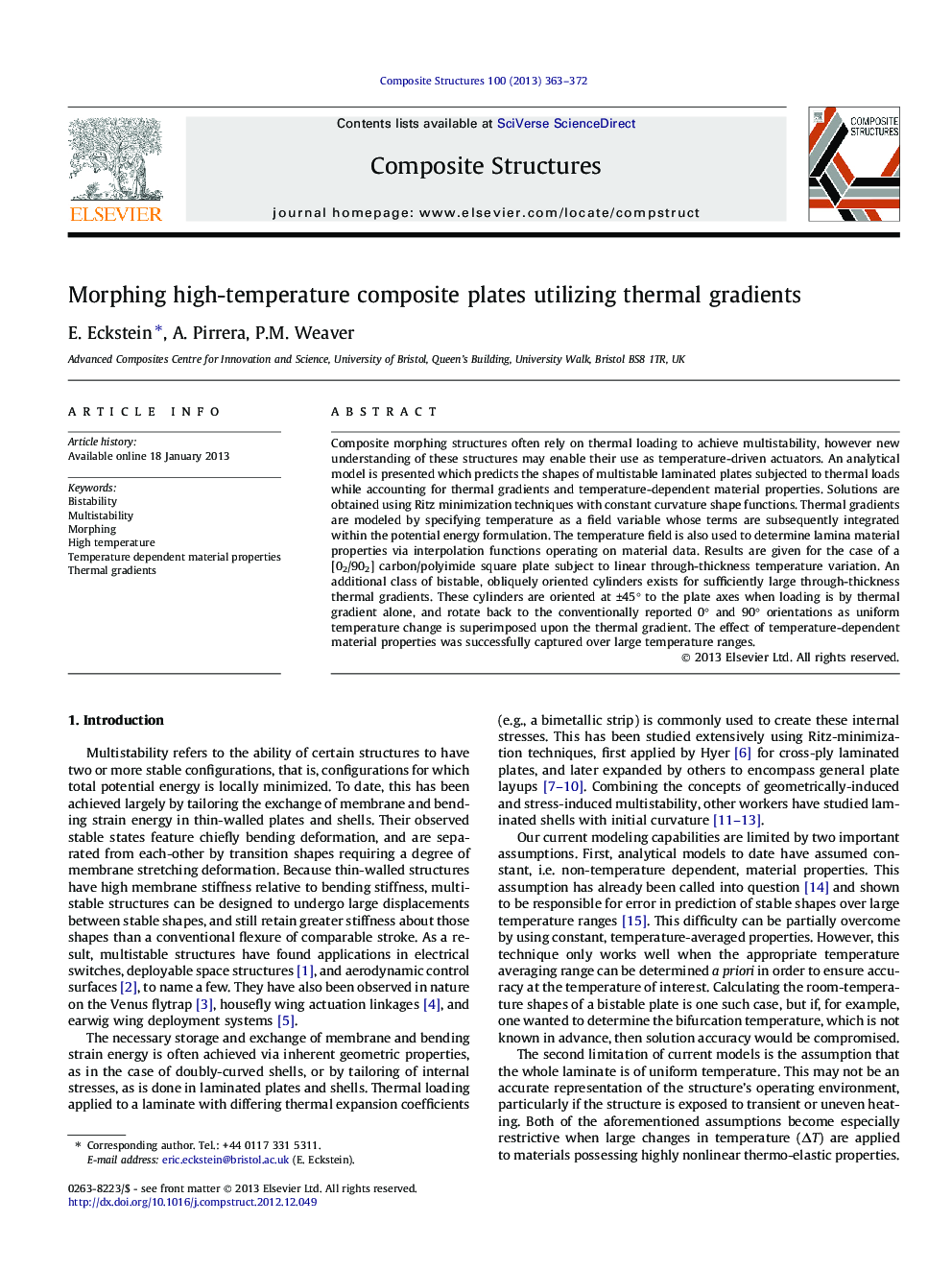| Article ID | Journal | Published Year | Pages | File Type |
|---|---|---|---|---|
| 251936 | Composite Structures | 2013 | 10 Pages |
Composite morphing structures often rely on thermal loading to achieve multistability, however new understanding of these structures may enable their use as temperature-driven actuators. An analytical model is presented which predicts the shapes of multistable laminated plates subjected to thermal loads while accounting for thermal gradients and temperature-dependent material properties. Solutions are obtained using Ritz minimization techniques with constant curvature shape functions. Thermal gradients are modeled by specifying temperature as a field variable whose terms are subsequently integrated within the potential energy formulation. The temperature field is also used to determine lamina material properties via interpolation functions operating on material data. Results are given for the case of a [02/902] carbon/polyimide square plate subject to linear through-thickness temperature variation. An additional class of bistable, obliquely oriented cylinders exists for sufficiently large through-thickness thermal gradients. These cylinders are oriented at ±45° to the plate axes when loading is by thermal gradient alone, and rotate back to the conventionally reported 0° and 90° orientations as uniform temperature change is superimposed upon the thermal gradient. The effect of temperature-dependent material properties was successfully captured over large temperature ranges.
